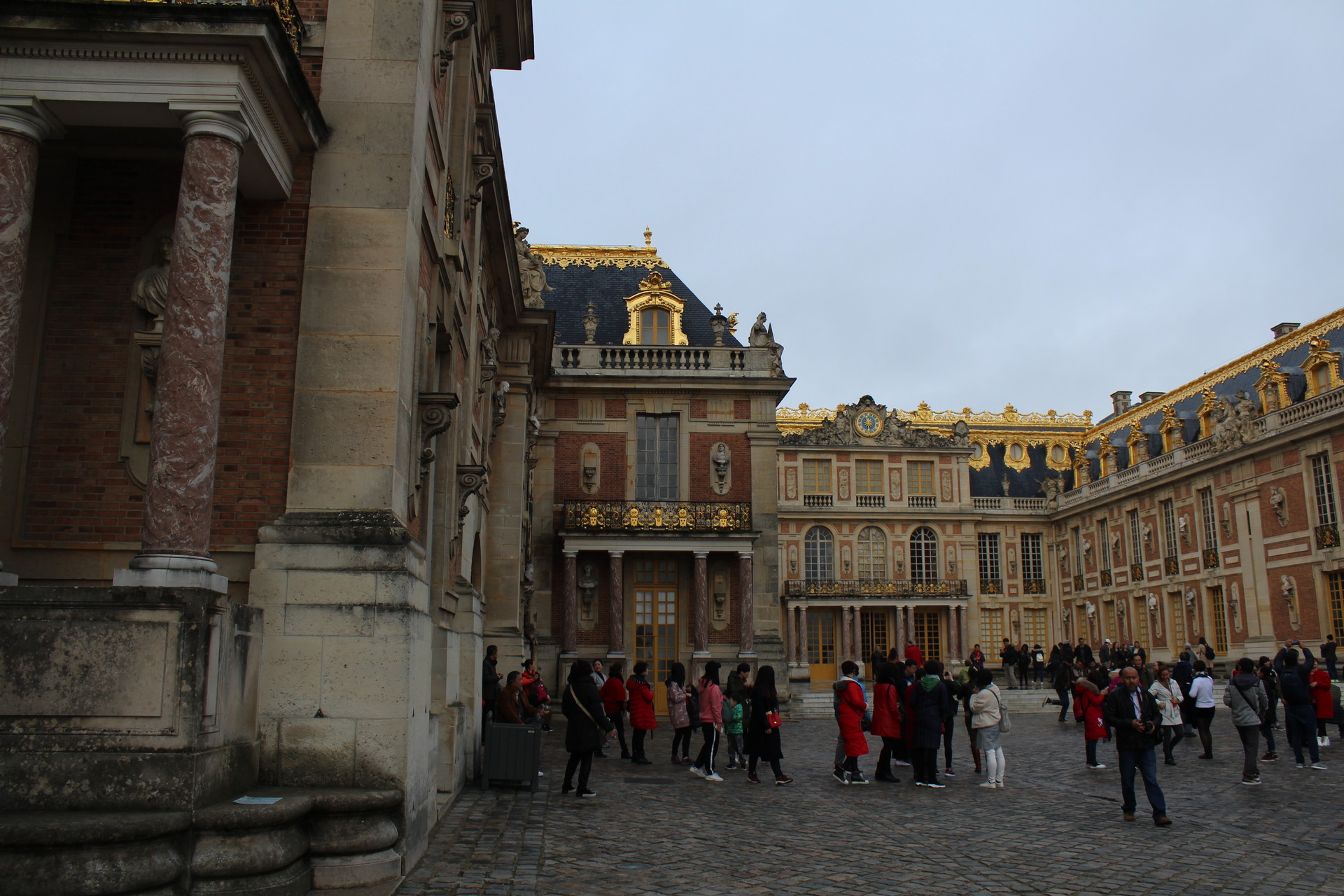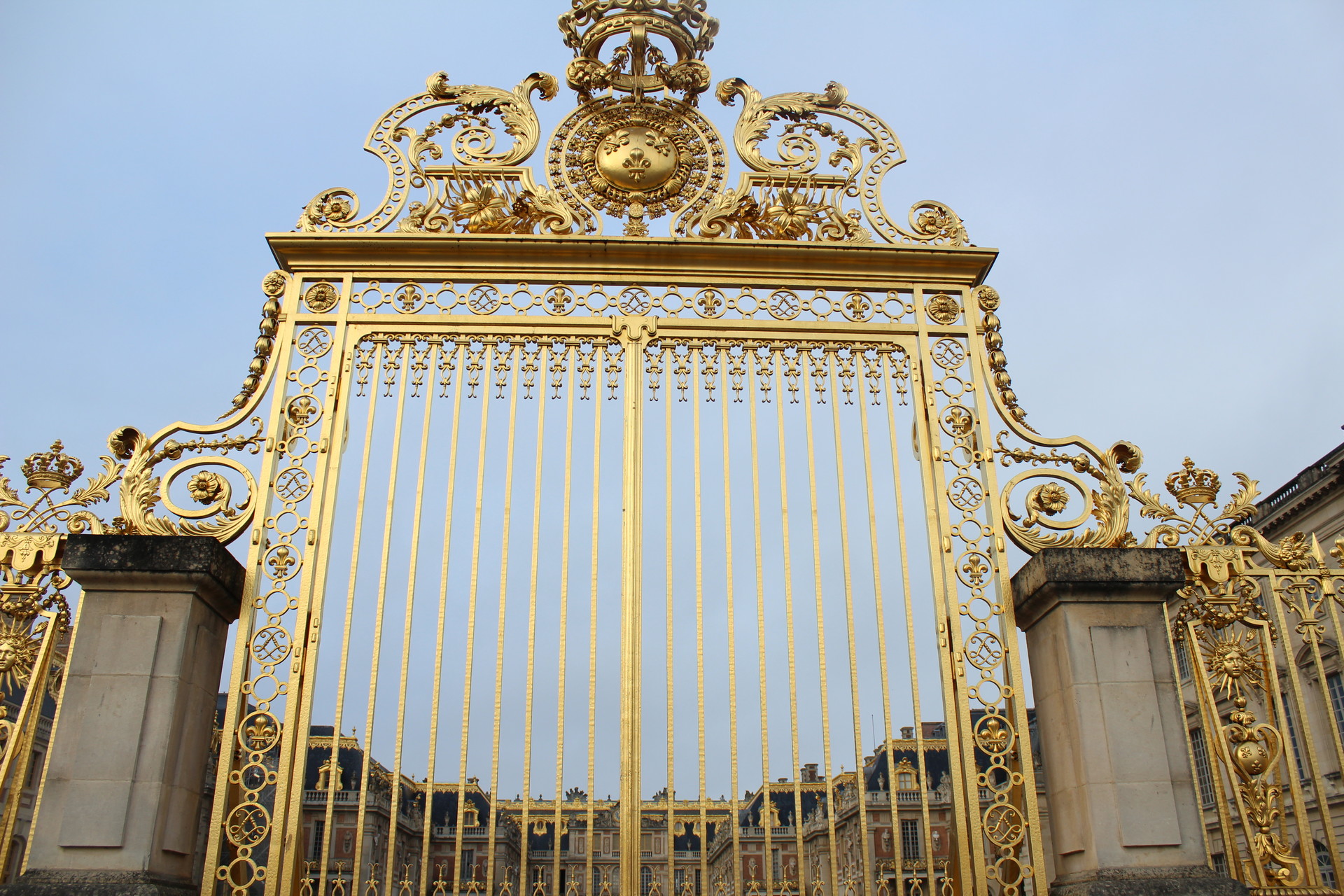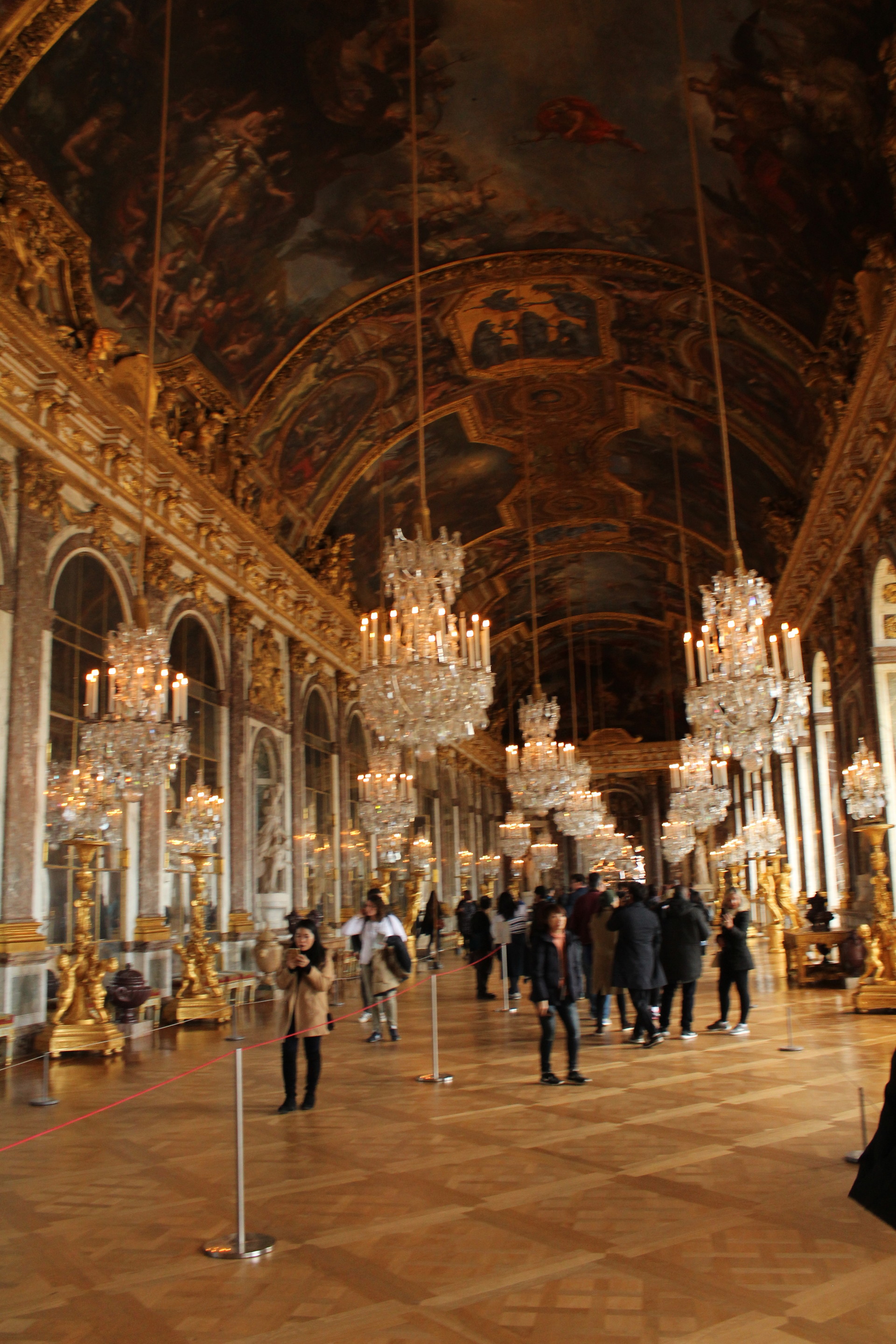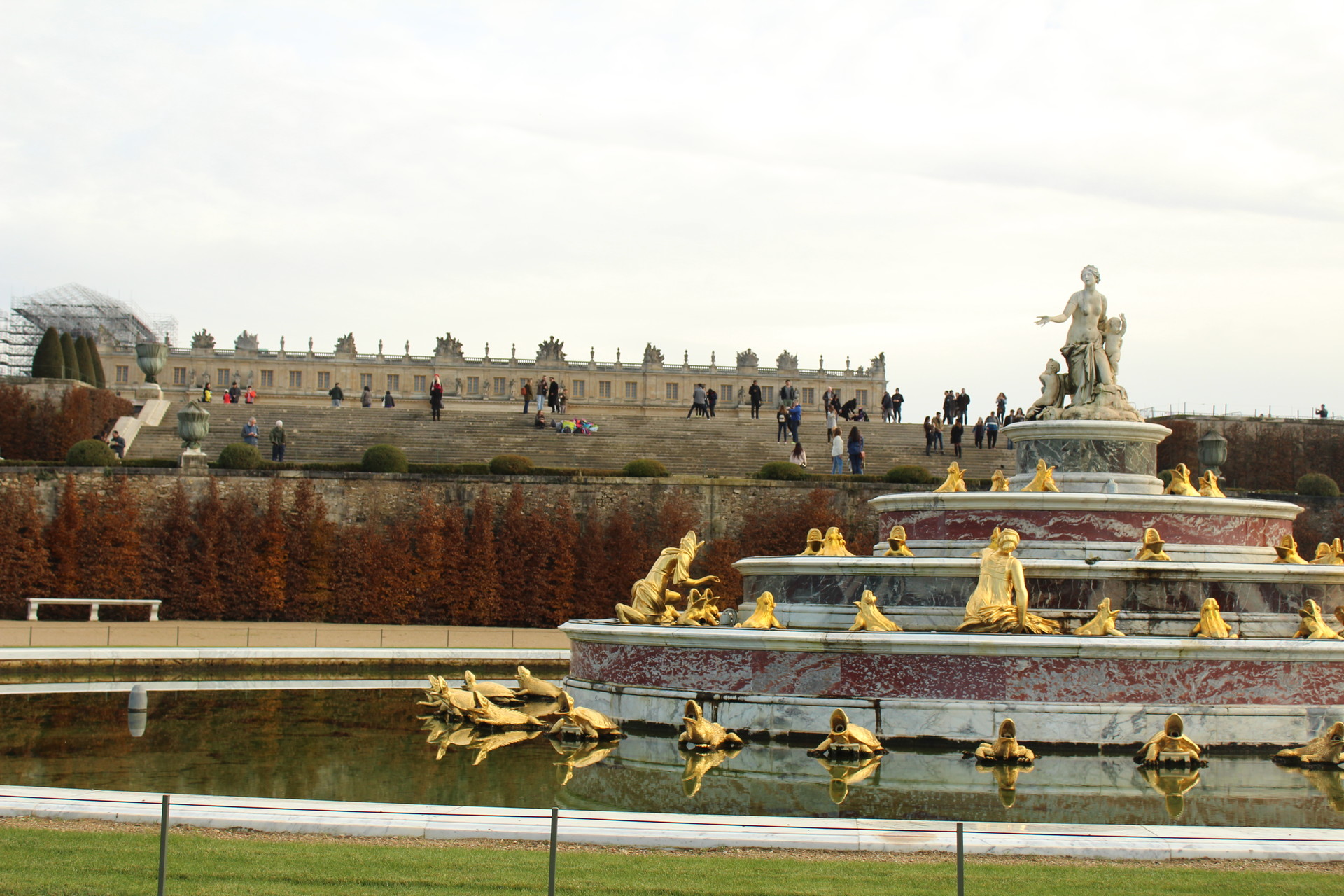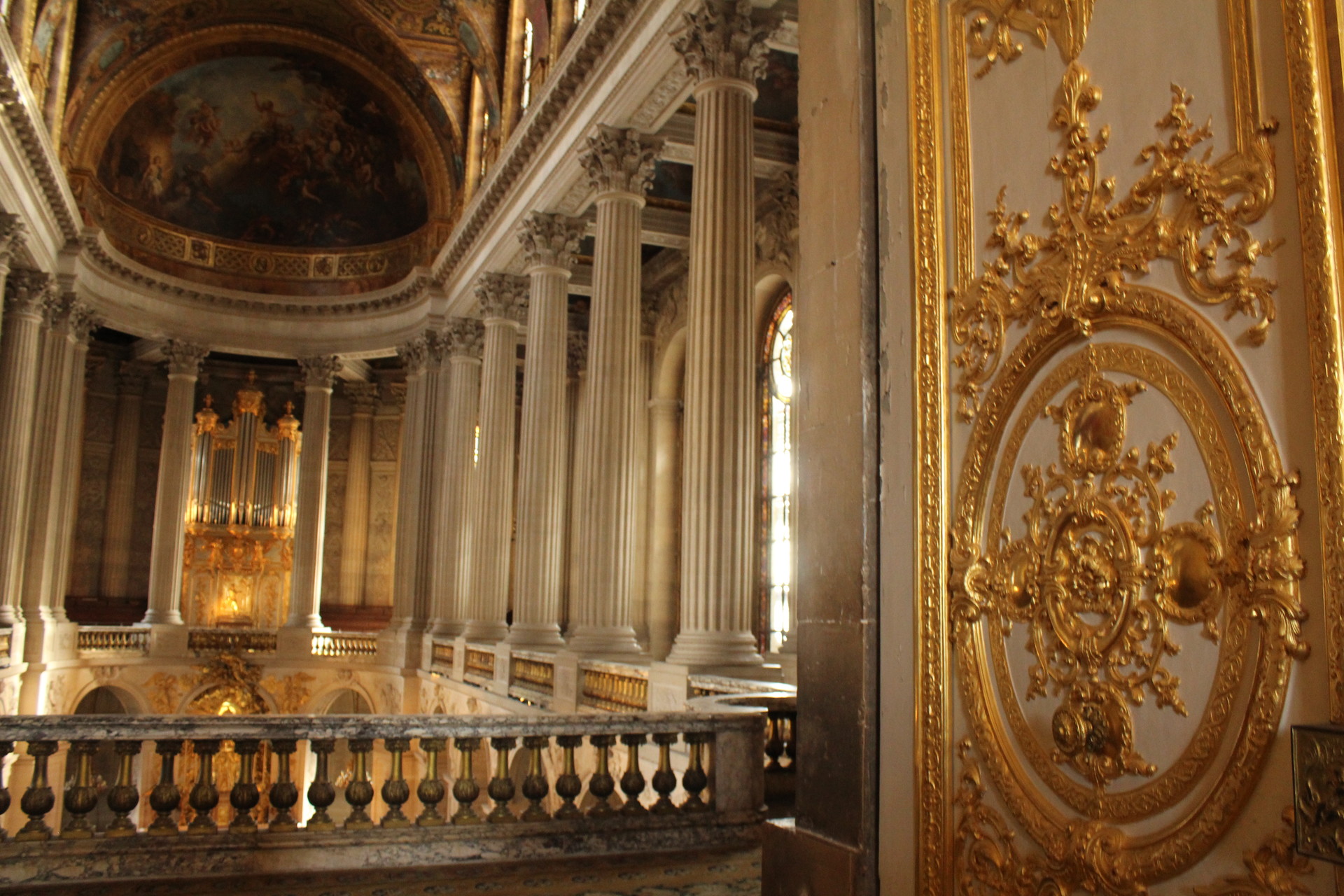France is one of the most visited countries both in Europe and in the world, and it's no surprise considering its historical, artistic and cultural richness. If you are going to visit France (you have to do it), I recommend that you spend at least a minimum of five days there to be able to fully enjoy its best tourist attractions.
The Palace of Versailles is an absolute "must see", which, if you remember from History class, has been a pivotal witness to some of the most important events both in France, shaping those in world history too. You can't forget that it was witness to the very same French Revolution and the signing of the Treaty of Versailles.
The palace is one of those attractions that takes your breath away, having been used as a residence for the Royal Family for more or less a century. It has extravagant and elegant furnishings, enormous gardens with a lake, the Petit Trianon and Marie Antoinette's former residences, and even a modest-sized farm in "La Aldea". This is one of those places where it is difficult to find the appropriate words or adjectives to describe it, you definitely have to experience it for yourself. If you are interested, bear in mind that the grounds are enormous and that you could definitely get lost. In the best of cases, it will take you an entire day to see it all, so take this into account when you plan your trip to this World Heritage Site.
How much does it cost to visit?
Being a student has its advantages: in the end, all of suffering of studying has to be recompensated, don't you think? And what better way to recompensate for it than whilst we are travelling. All Erasmus students (students from within the European Union) have free entry to the site.
If you aren't a student and you have to pay the entrance fee, the amount that it will cost you will depend on the dates and the specific places that you are interested in visiting. For example, the "Passport" ticket, which allows you access to all of the Versailles grounds, costs 18€ (approximately $21. 39), but if you visit the palace during the 'Musical Fountains' or 'Musical Gardens' shows, the price will rise to a sum up to 25€ (roughly equates to $29. 72). If you are someone who walks slowly and feel like you need at least a couple of days to visit everything at the Chateau de Versailles, you could buy the "2 Day Passport" ticket for 25€ ($29. 72), or 30€ (around $35. 66) if you want to see the musical spectaculars too. Finally, the cheapest ticket, the "Palace ticket", only allows you access to the palace itself and costs somewhere in the region of 13€ and 15€. If you want to visit the Trianon and Marie Antoinette's house, you will be able to do so after paying an additional 10€ ($11. 88). Entry is free on the first Sunday of the month, but you could imagine how busy it gets.
It was January when I visited; it will be a really cold month, but it's the month with the least amount of tourists, so this makes it all worthwhile. The Palace of Versailles tends to generate huge queues of people, taking over an hour just to buy tickets and then another to get through security and actually enter the grounds themselves. So, you can check the calendar on palace's website to see how many people are expected to visit on a given day, allowing you to modify your plans accordingly.
How do I get there?
Aside from the cost of entering the palace grounds, you will also have to consider the cost of transport from Paris to Versailles itself. The best way to get there is by taking the RER, a type of suburban train that connects Paris with other distant cities. The line that will take you to Versailles is Line C and you must alight at the station, Versailles Rive Gauche. I remember that a return ticket cost approximately 7€ (roughly around $8. 32).
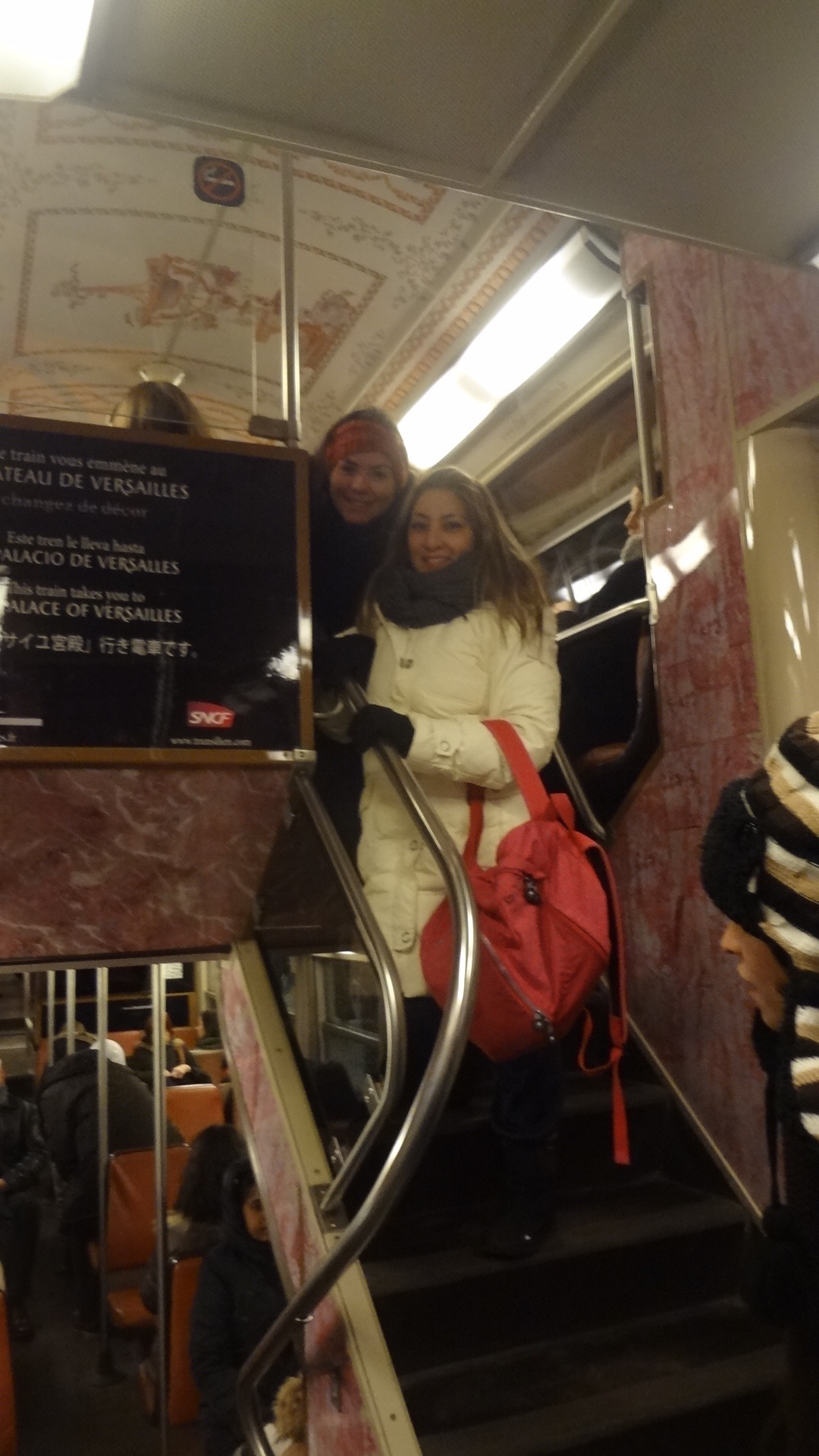
(Here, we found ourselves on a double decker train. )
If you are going to Versailles, you have to get up really early, as the train that takes you there from Paris takes around 40 minutes, and that's without factoring in the transfer time from your accommodation to the RER station where the suburban trains stop. Many people usually say that the Parisians are not the friendliest, but I always found kind people who were willing to help me when I found myself lost.
That's how my friend and I were able to get to the station where the RER heading to Versailles was. To our surprise, the train was incredible: it had two floors and was designed in such a way that it felt like we were already inside the Palace of Versailles. Both inside and out, it was upholstered in such a way that it was as if the Sun King himself was travelling on it. I later found out that only some of the trains on this line are decorated like this, so we considered ourselves to be even luckier; when we boarded the train on a different day to get to another city, that one wasn't decorated. Fortunately, it wasn't peak season when we visited the Palace of Versailles (we went on January 19th), so that meant that didn't come across many tourists both on the train and within Versailles itself compared to the amount of people who are there in the summer. According to what people have told us, the sheer quantity of people who visit this marvel is unimaginable.
Arriving at Versailles
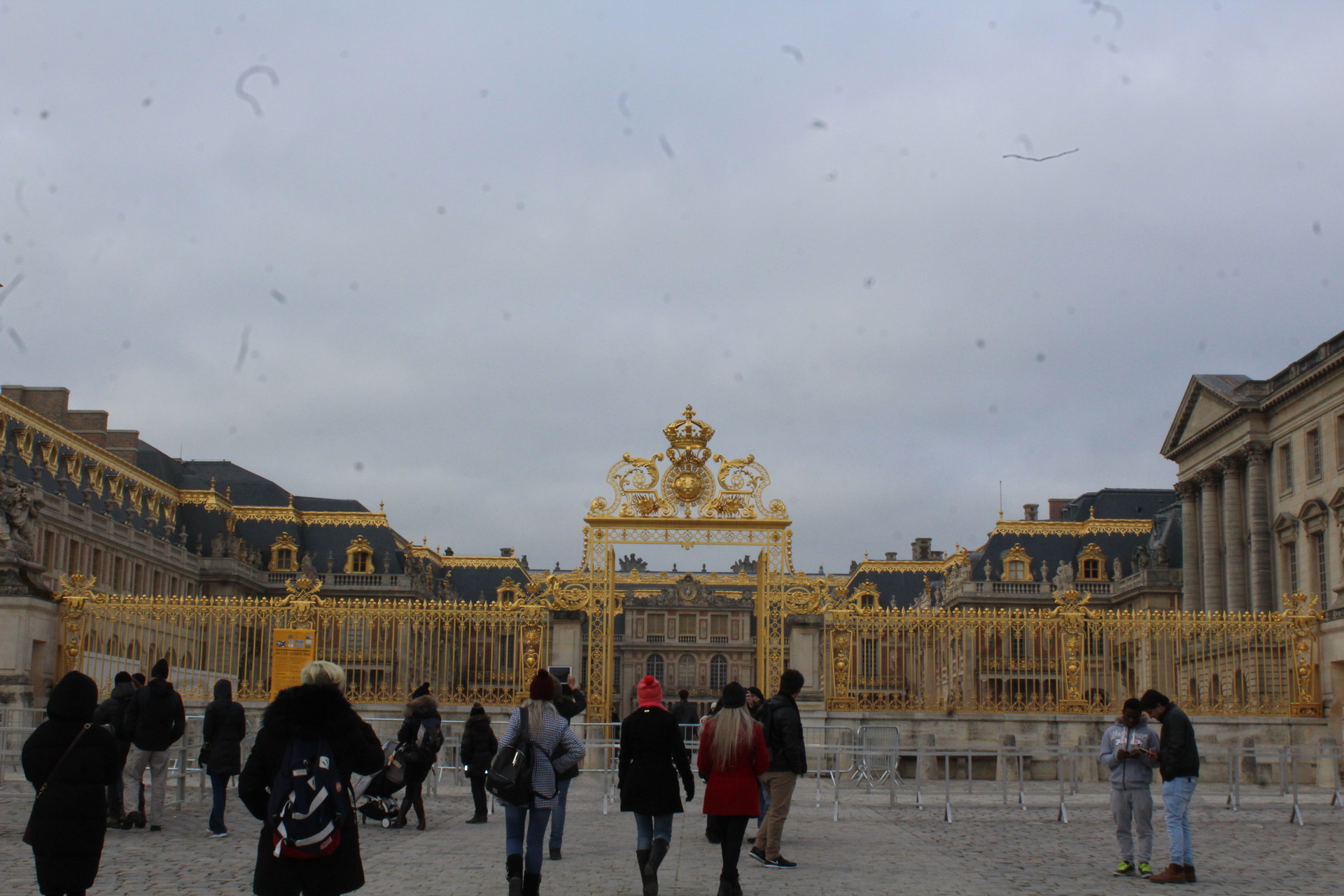
(Did you see the completely unnecessary queuing system to access the palace grounds? )
After an approximately 45 minute journey on the RER destined for Versailles, we arrived in this beautiful city, which is very quaint and cosy. The Palace of Versailles is just less than a ten minute walk from the station, as it's located just a couple of blocks away. If you couldn't buy your tickets online beforehand, don't worry, there are lots of tourist companies situated just outside the station that will be able to sell tickets to you. Equally, you will be able to buy them just outside the palace too. Just bear in mind that if you haven't bought tickets in advance and you visit in peak season, you will have to wait in queues for more or less an hour to be able to buy them, before waiting for another hour to get through the security checks on the periphery of the palace grounds. In the event that you don't want to lose two hours of your life, buy your tickets at the box office and go in the off-peak season, as the security checkpoint is impossible to skip. If you have your student ID card, you will be immediately able to join the line for security screening, as your ID acts as your ticket.
The security screen queue can double as a way to make friends with fellow tourists! We ended up meeting a really nice girl from the Middle East with whom we ended up walking around the complex, as well as a little bit of Versailles afterwards. If you go there with food or drink, you will have to leave them in the storage room at no additional cost. After passing the security checkpoint, you will be right inside the palace and will be able to walk around it at your own pace.
A little bit of history doesn't hurt
The Palace of Versailles is one of the most visited palaces in Europe, and, without a doubt, the most visited in France. The palace was built by order of Louis XIV in the 17th century, who decided to move all of his court to this huge estate in 1682. Part of the material used for its construction was gold, and all of the luxuries that comprise the building give it a current value of around $2 billion.
Dear readers, I think that you are still underestimating me when I say that "it's ENORMOUS"! The palace has approximately 700 rooms, 67 staircases and 2153 windows.
Luis XIV is best known as the Sun King, and as soon as you see the dazzling palace that seems to be entirely gold-plated, you will better understand where this aforementioned nickname comes from. The Palace of Versailles was built thanks to his desire to create something worthy of boasting about and that was very difficult to surpass in terms of its architectural design, its ostentation and its splendour. He took take of its design and a trio of architects his age, Charles le Brun, Louis le Vau and Andre le Notre, the construction. These men were tasked with building an enormous complex that would reflect the Sun King's personality and lifestyle, as well as his love and affinity for the arts. After decades of tireless work, the result was simply astonishing and really exceeded everyone's expectations, with Versailles being classed as a jewel within the Royal European and Imperial residences. Although other palaces have been built since that of Versailles, nobody has been able to surpass the majesty, the cost and the artistic detailing that its construction entailed thus far.
Are there any audio guides?
After passing the security checkpoint, the first thing you will have access to will be the front patio of the palace, where you will be able to take advantage of the opportunity to take some photos of the main facade. Mind you, don't expect to be completely alone when taking your photos, as it will be impossible to capture one that doesn't have another tourist taking their own photos in the background.
Afterward, you must go and collect your audio guide, which is included in the cost of your ticket. This audio guide will activate itself automatically during the first few rooms, which are arguably the most important in the palace. After that, you will have to use it manually, but it's very easy, don't worry. If you are interested in looking at and hearing about Marie Antoinette's bedroom, for example, you will be able to find a number located in that particular room. Then, you will just have to input it into the guide before pressing "play" or "start" to listen to the explanation. You can repeat the commentary as many times as you like, and you will be able to find it in your native language, which the staff will ask you about when they configure the device for you. For many people, this audio guide is of great help; for others, it's really distracting. In the end, it'll be your decision as to whether you choose to use it or not, but they are free to use, so it wouldn't necessarily hurt to get one anyway, wouldn't you say?
Why don't we start the tour?
The Palace of Versailles will seem like the most lavish place that you've ever seen in your life. It's impossible not to feel amazed with every step that you take.
In the first few rooms, they explain the palace's basic architecture to you, talking about who built it, how they built it, how long it took them, and, above all, the modifications that have been made it over the years. One of the things that has been maintained are the water systems that regulate the fountains, which are very difficult to fix because many of them still work in accordance with how they were made so many years ago. The palace's clocks are fixed by a master clock designer, who is in charge of ensuring that all the clocks show the same time and fixes them every time they break. Given that many of them are so old, it's likely that the modern clock parts wouldn't even work in them.
As I was saying, in these first few rooms of the palace, they explain the architectural changes that have made and how the palace has been made bigger. An example of this are the apartments that Louis XV ordered to be built to fulfil his desire of having an intimate life without having to leave the big and luxurious rooms. These apartments were furnished and extended up until the eve of the French Revolution, when the Kings were stripped of the palace. I think one detail you must bear in mind is that the palace's furniture and paintings are not the original ones, they are replicas. This is due to the fact that many of the objects were actually stolen and looted during the revolution and their whereabouts are unknown, so it's likely that, many a time, you will read something along the lines of, "this furnishing is a replica from the X century... " or "according to what historians must have seen... ". The latter is especially the case in what was Marie Antoinette's room, and is simply a very good replica of what it was originally like.
The Royal Opera of Versailles
Within the palace, there was also a Royal Opera that was built between 1768 and 1770. This was one of the ballrooms that was used for the big parties in the court life; it's literally like the ones we see in the Disney Princesses films: gala dances, royal banquets, and musical performances. This place had really modern and complex architecture for its time, as it had a system of jacks that lifted the floor to stage level to create just a single space for the dances. I am sure that you will ask what was the reason behind its construction... well, the King ordered it to be built for his wedding to Marie Antoinette. This was simply another reason more for people's repudiation of her, given that the expenses created as a result of this construction work were impressive, and not in a good way.
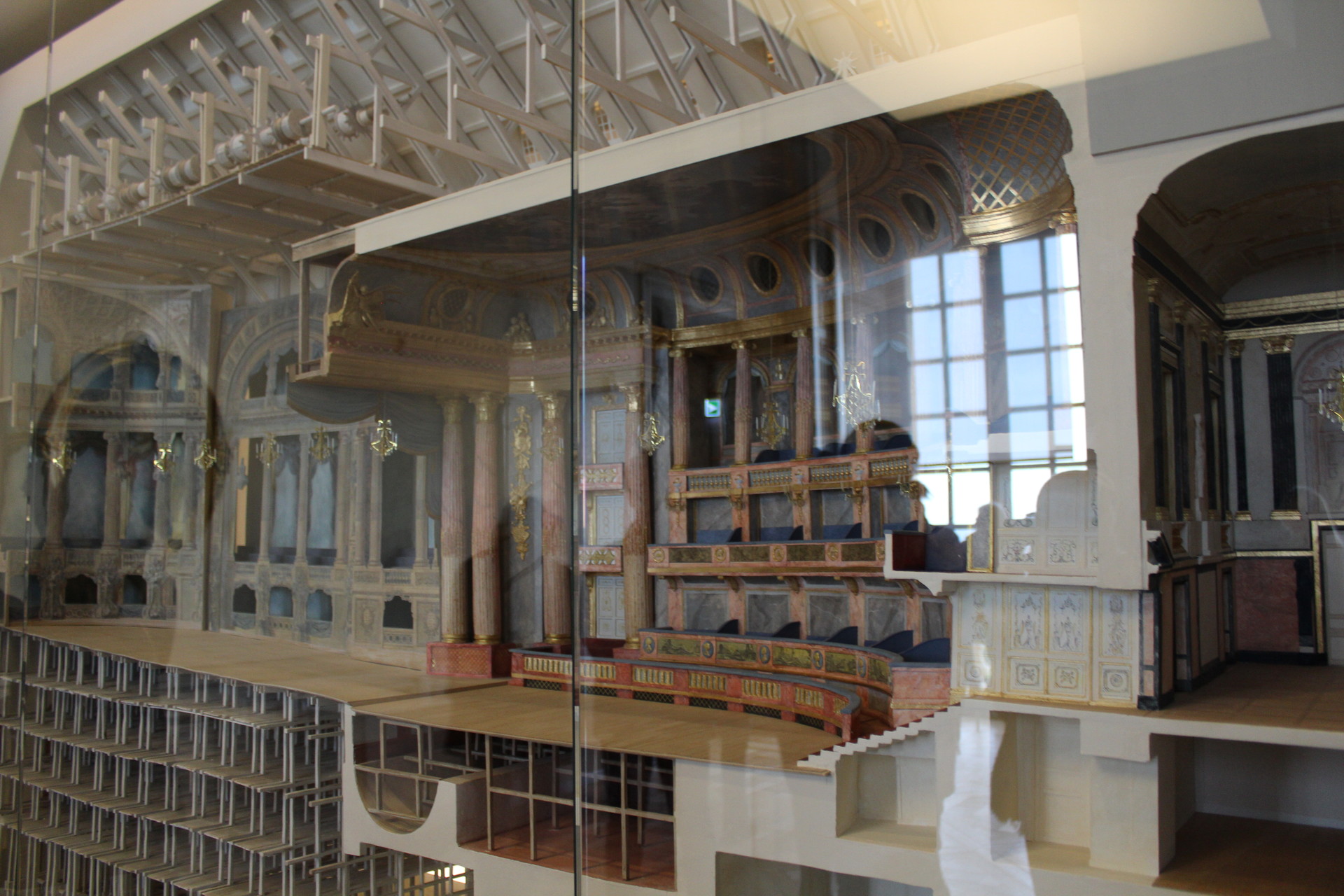
(This scale model shows how big the Royal Opera was and some of the other apartments found in the palace. )
The Sun King's Room: an exceptional view
Life in the court of Versailles was very hectic - the Sun King was never alone. In agreement with what historians have stated, there were always people in his room (up to 100 at a time), who watched him wake up, get ready, and even sleep, every single day. Immediately after waking up, he attended mass at the Royal Chapel with one of the most famous choirs in Europe. After this, he would travel throughout Europe, where many people would talk to him to ask questions or simply speak about things related to the French court.
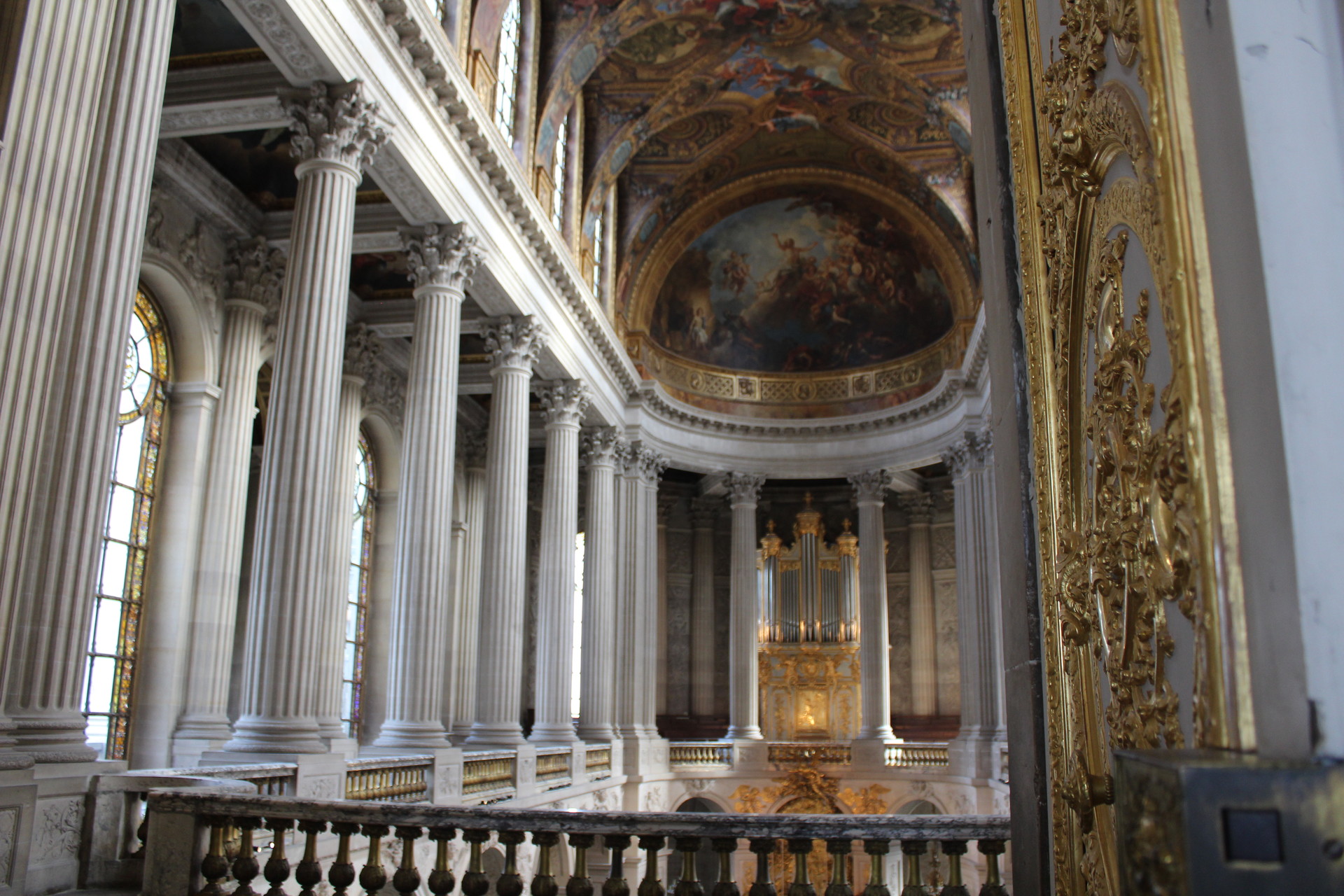
(The famous Royal Chapel where the Sun King attended mass every day. With a chapel this nice situated just a few feet from the comfort of your bed, would you just listen to mass? )
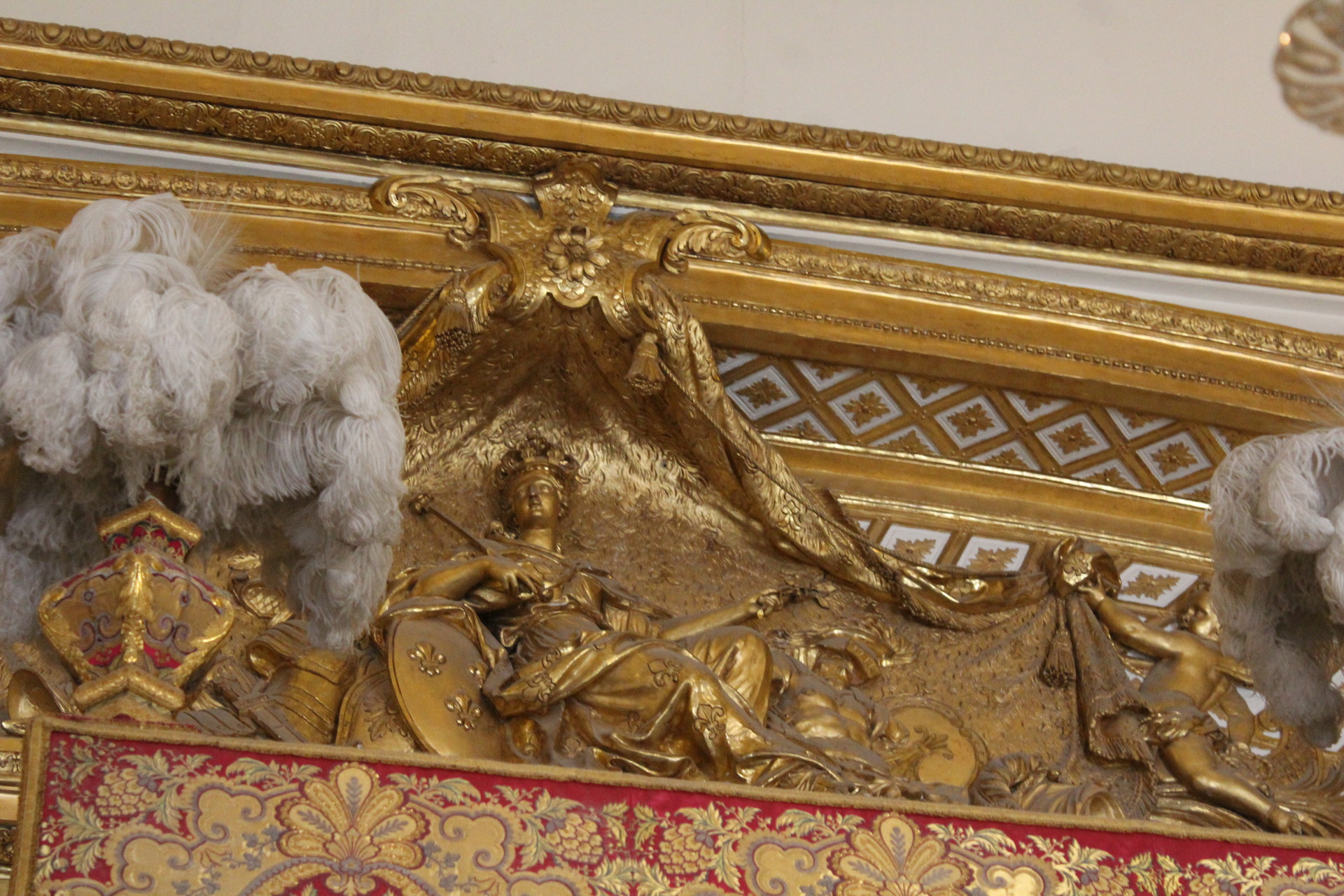
(I zoomed in a lot on the camera to capture this detailing on the wall. In this way, you can appreciate the work that was required to construct such a meticulously detailed complex. )
The palace and an enormous museum, where you will also find important works of art and spacious gardens. You will find marble walls, glass candelabras, articles covered in gold, and multiple pieces of artwork that cover an entire room. The King's room is located right in the centre of the palace, allowing you to see both the gardens and the outskirts of the grounds from the very same place. Without a shadow of a doubt, the view is exceptional.

(The Sun King's famous bedroom. He was never alone in this room, not even while he was getting dressed... life in the Royal Court doesn't sound as enviable now, does it? )

(This is the front view of the palace once inside. Right in the centre and above is the Sun King's room, which is shown in the above photo. )
The construction of the Petit Trianon (Marie Antoinette's home)
But what about Marie Antoinette's Petit Trianon?
This complex is located a half an hour walk away from the palace, and is also known as "The Queen's House". Marie Antoinette was one of the most influential and most hated women in the whole of France; many considered her to be the cause of the French Revolution. And if she wasn't the catalyst exactly, she certainly influenced its development. Marie Antoinette was married to Louis XVI, a man with a fair amount of money. Antoinette is very much hated for having used the village's money to become a French fashion icon, given the ridiculous amount of dresses, wigs and shoes that she had, but she was the originator of fashion trends in France and other countries. Given that her husband, the King, considered her to be very much exposed in the court and that she wanted to rest from the hectic life she was living, he gifted her the Petit Trianon.
The Palace of Versailles is enormous, but the gardens that occupy hundreds of hectares of land are even bigger. Close to the Grand Trianon, Luis XV ordered the construction of a garden with flowers and greenhouses, which ended up housing many exotic plants. But there weren't just flowers, but also recreational grounds where you could eat and play. However, their most popular use was as an apartment block for Madame de Pompadour, who was Luis XV's mistress. When Luis XVI was made King, he decided to gift the gardens to his wife, Marie Antoinette, who ordered these beautiful botanic gardens to be replaced by an English-style garden.
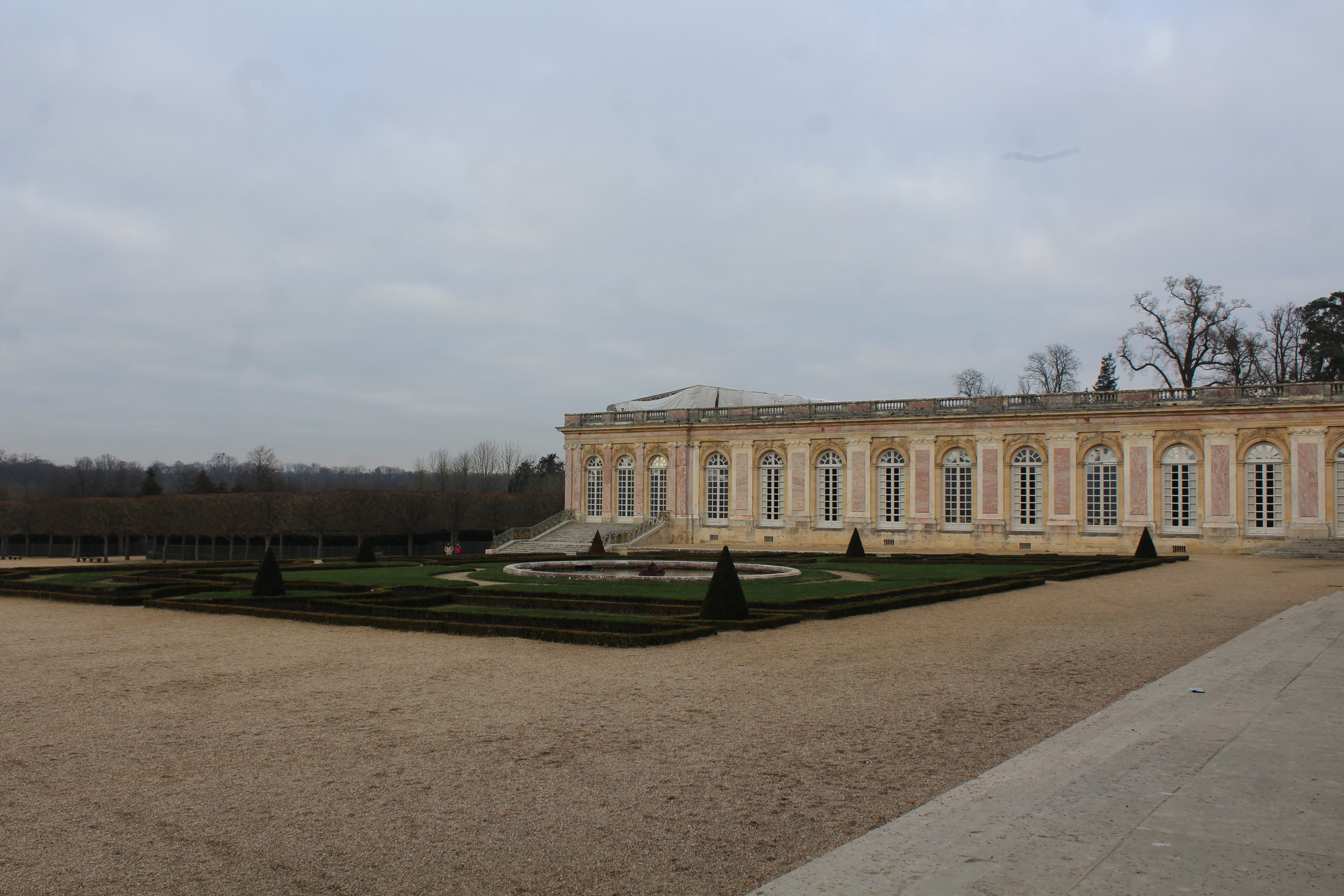
(The gardens of the Petit Trianon, which look like those located in front of the Palace of Versailles, but are on a smaller scale. )
This place is beautiful and has its luxuries, however it is nothing compared to the decoration and luxuries of the palace, which completely surpass it. Although I must admit that it has its own gardens and this Trianon is very luxurious for just being a kind of country house situated away from the life of the court. I must also admit that coming to the Palace of Versailles reminded me of a food tasting, where you have to drink coffee to cleanse the palate in order to try the next thing objectively. This happened to me a lot with the Trianon: I felt so amazed by all of the luxuries, the detailing, the splendour, the gold, the decoration, and the money invested into the palace that by the time that I arrived at the Trianon, it didn't feel like such a big deal... maybe it actually was, but I think that I would have been more impressed had we visited this place first and the palace afterwards. Although I have to admit that this small place is considered to "not be as important as the palace", it has more luxuries than the old government houses and even the Chapultepec Castle that we have back home in Mexico. So, in comparison, I feel like our museums are nowhere near luxurious enough. This when I remember the famous saying, "travel opens your eyes", and of course I went and opened them.
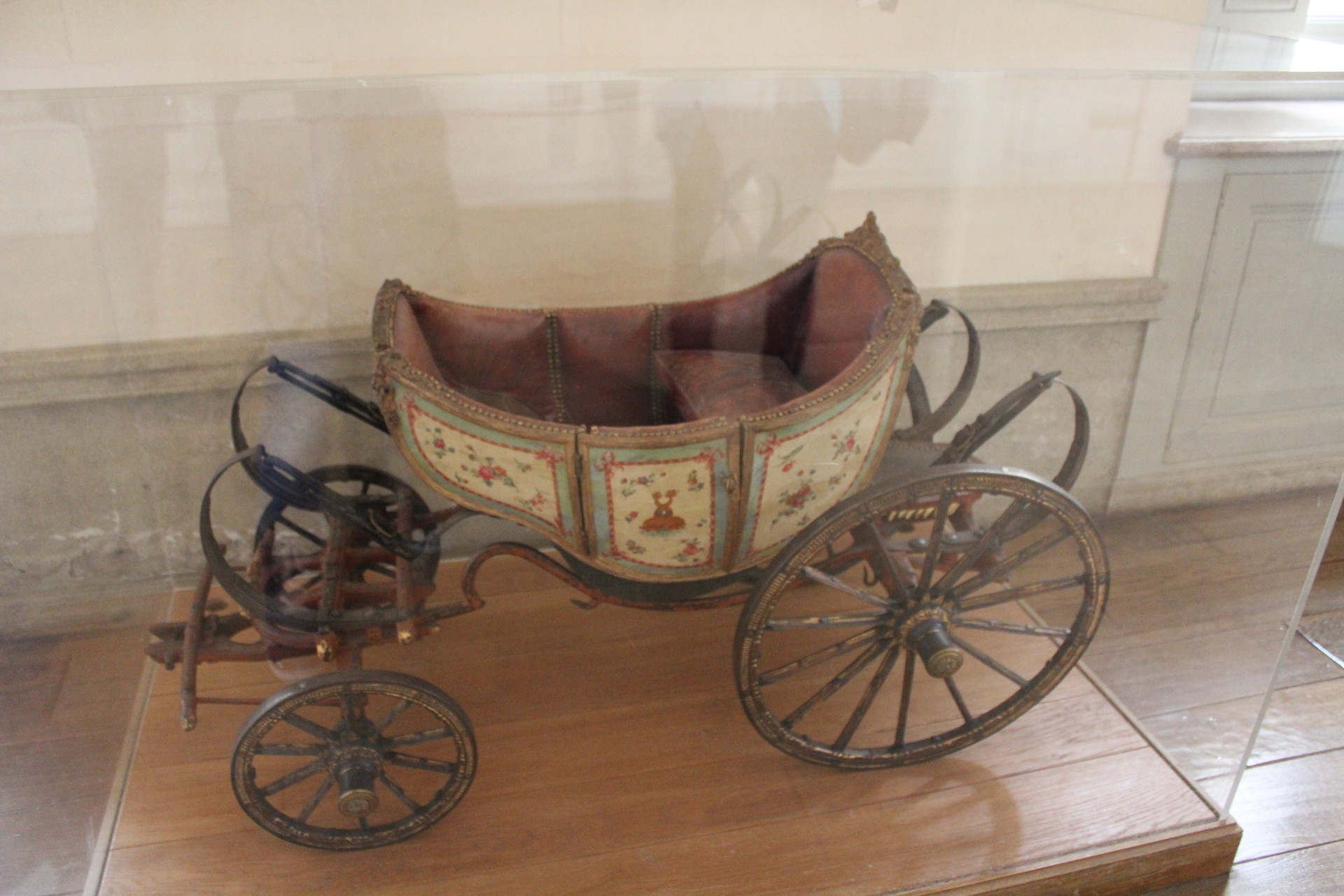
(Have you ever wanted to see what a royal baby stroller was like? Here you can! )

(As I already said earlier, it's very pretty and luxurious, but when compared to the Palace, it lacks a little more gold. It's as if being here has already made us more demanding. )
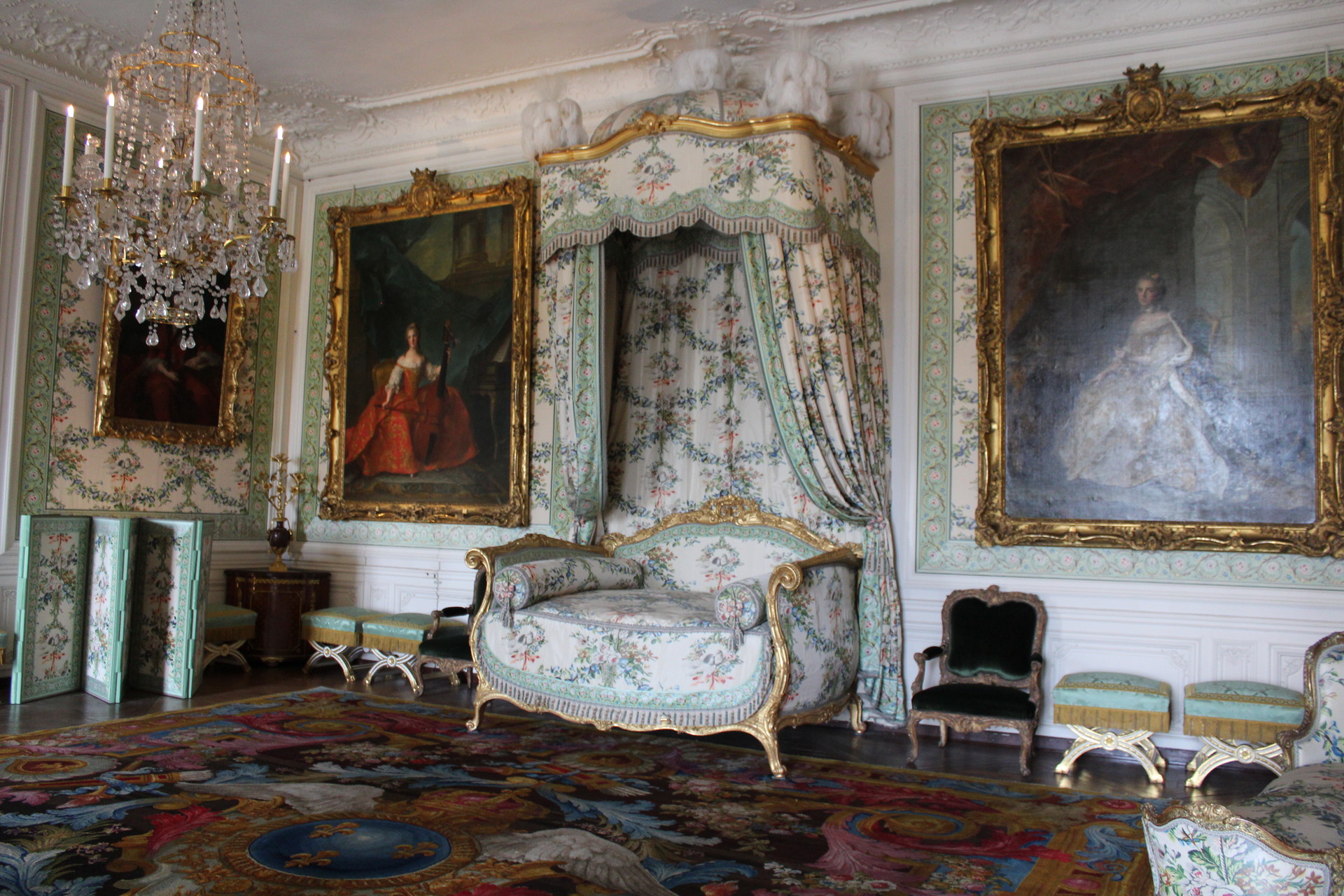
(This is a replica of what Marie Antoinette's room would have been like. )
The Trianon is located around a forty minute walk away from the Palace of Versailles, although this is accounting for the small distractions of taking photos and playing with animals. It only took us twenty minutes to walk back, so to summarise, it takes twenty minutes to get there if you walk quickly and 45 minutes if you walk like a distracted tourist. The palace train must take more or less around 8 minutes.
The domain of Versailles: gardens in numbers
The gardens are one of the things that are most impressive about the palace and it's not for no reason - they occupy 93 hectares of land. The gardens also have a park surrounded by walls that covers 700 hectares, with the centre of it being marked by the Grand Canal. In total, the number of open walls and doors that define its perimeter measure 43 kilometres in length, where there previously were other royal and stately grounds where Luis XVI usually hunted. It's for this reason that the Palace of Versailles has some trains at its disposition that can travel around these gardens, as although walking is recommendable, it's honestly very tiring; it took us an hour and a half to walk around them and nor can we say that walked a great distance. If you have money to pay the cost of taking the little train, which is 8€, I would recommend taking it because it will save you a lot of time and will save you from being unnecessarily tired. Also, in peak tourist season, you will also be able to rent a golf trolley or a bicycle, although I unfortunately don't know the prices of these.

(In this photo, you can see both myself and the gardens that go on for hectare after hectare until they vanish from your sight. It would seem like they would never end. )
The gardens have 200, 000 trees, 372 statues, 630 water sprinklers, and 52 fountains that work with the same system that they were originally designed and installed with.
The famous and incredible House of Mirrors
This is one of the most famous rooms in the whole of the palace: surely you have already seen it in magazines, photos or films. And which is it so famous, you ask? Because it is where all of the royal receptions were held. It's decorated with candelabra, but before that (when there was no electric light), it was illuminated by more than 3000 candles. This room is not only visually striking, beautiful and surprising, but it also has an important historical impact, as it was here where the Treaty of Versailles was signed at the end of the First World War.
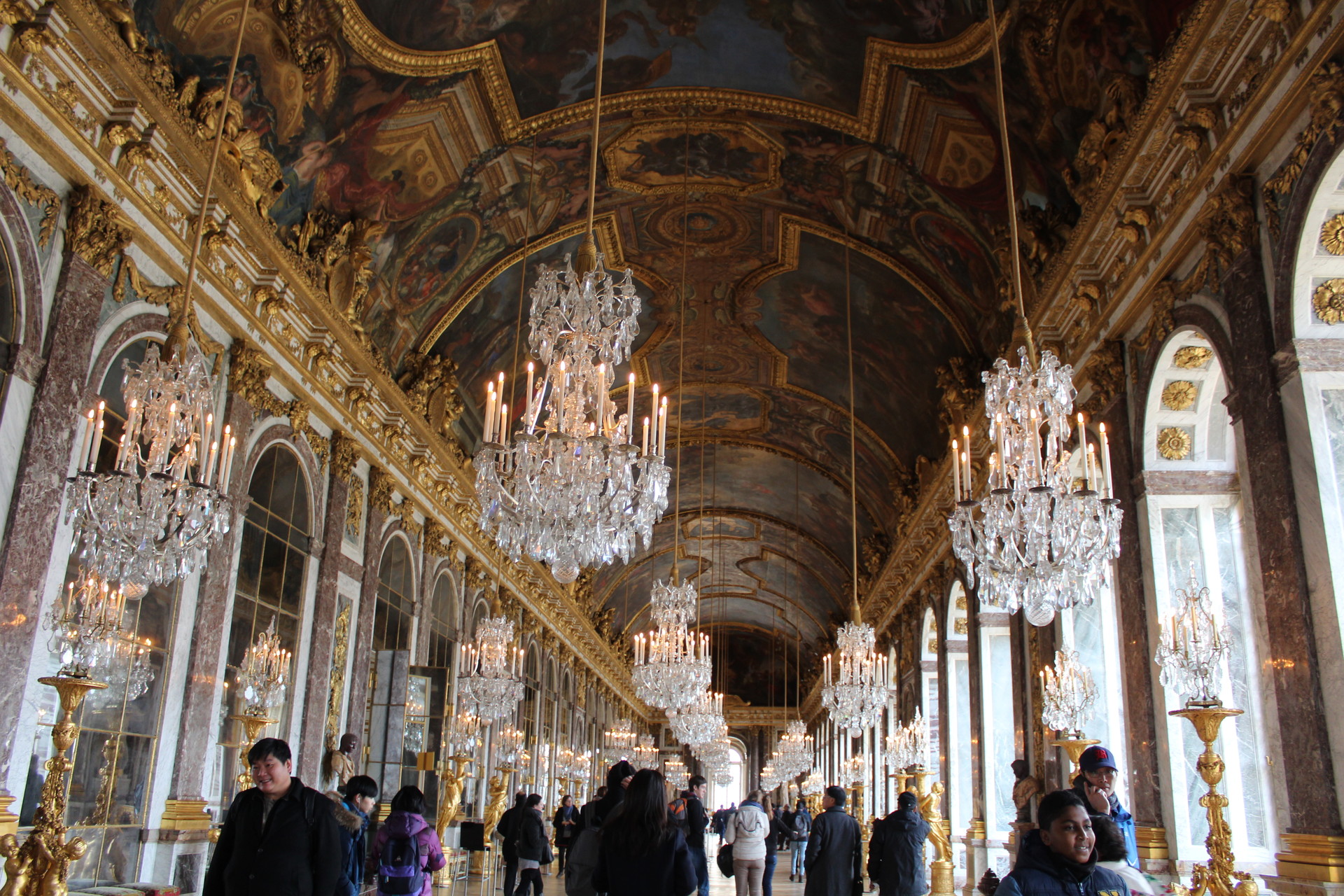
(Have you already seen the detailing on the candelabra, the ceiling, the windows, the mirrors, the floor, and... well everything? I think this is, without a doubt, my favourite room in the entire complex. )
Usually, it will be here where you have to fight the most to get a good photo, as it's pretty much compulsory as a tourist to take a photo in this wonderful room. I even saw people jumping over the "do not cross" line. And another thing, it's in this type of room, where you are constantly distracted by the floor, the candelabra, the gold (by everything, really), where you are most likely to be stolen from. There are thieves in the palace who dress up as tourists, and if you walk around with your bag open or are very distracted, they will take advantage of the opportunity to steal your wallet, phone, or anything else for that matter.
Gardens, fountains and animals
Although they weren't full of gold or ostentatious and luxurious furnishings, they undoubtedly astonished me and caused me to take a couple of deep breaths, since they are an attraction in themselves, making them strong competition against the palace.
The fountains are extremely detailed and some also have little touches in gold. Access to them is independent from the palace itself. During certain times of the year, these fountains are usually the backdrop to a kind of show with water dancers, accompanied by music. Usually, this takes place in summertime, but as I went right in the middle of winter, I sadly found many of the fountains to be switched off, whilst some of the statues that decorate the gardens were covered with black plastic bin bags. I think the only bad thing about coming here in the winter is that, as there are not many tourists, they don't care about having everything working 100% perfectly.
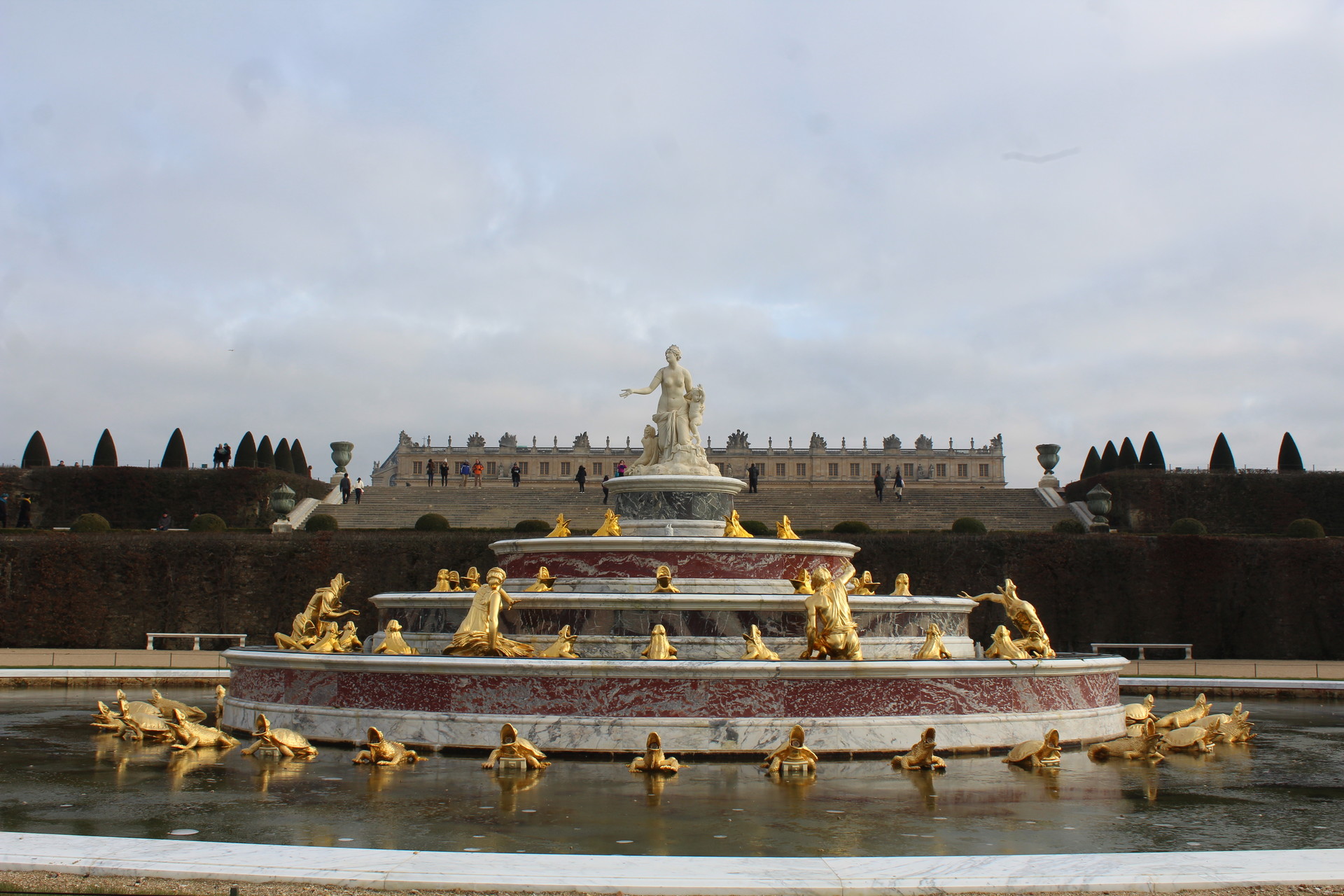
(Look at the detailing on the fountain. This is one of the main fountains at the palace, and the view of it from behind ended up being one of my favourite photos from that day. )
If you are an animal lover and you have a good eye, you can end up finding lots of them. There are quite a few geese, ducks and swans that swim in some of the fountains and in the Grand Canal, even despite it being half-frozen. Many of them are used to seeing tourists and are friendly; in fact, they will even expect you to leave them a little bit of food. We fed bread to a swan that came up to us.

(Our new friend who accepted one of our pieces of bread. )

(Have you ever seen tree roots so big before? Me neither! It's for this reason that I couldn't help myself from stopping to take several photos with this enormous tree trunk. )
Are you feeling hungry?
Within the palace's domain, there will be lots of places that can satisfy the ferocious appetite of any tourist that wakes up early in the morning and walks for hours around Versailles (and also for the type of tourist that is backpacking around Europe and doesn't want to spend too much money). One of these places is the Grand Café D'Orléans, where you will be able to eat something that will distract a hungry gut - it's a quick and cheap option.
You will find a couple of restaurants closer to the Grand Canal, in the area around the palace gardens. These restaurants look to be a little more expensive and ostentatious, but they have beautiful decor and it's highly recommendable to eat there. One of them is called La Flottille and it's the one that people recommend the most. There is another restaurant located a bit further away, but I don't remember what it's name was.
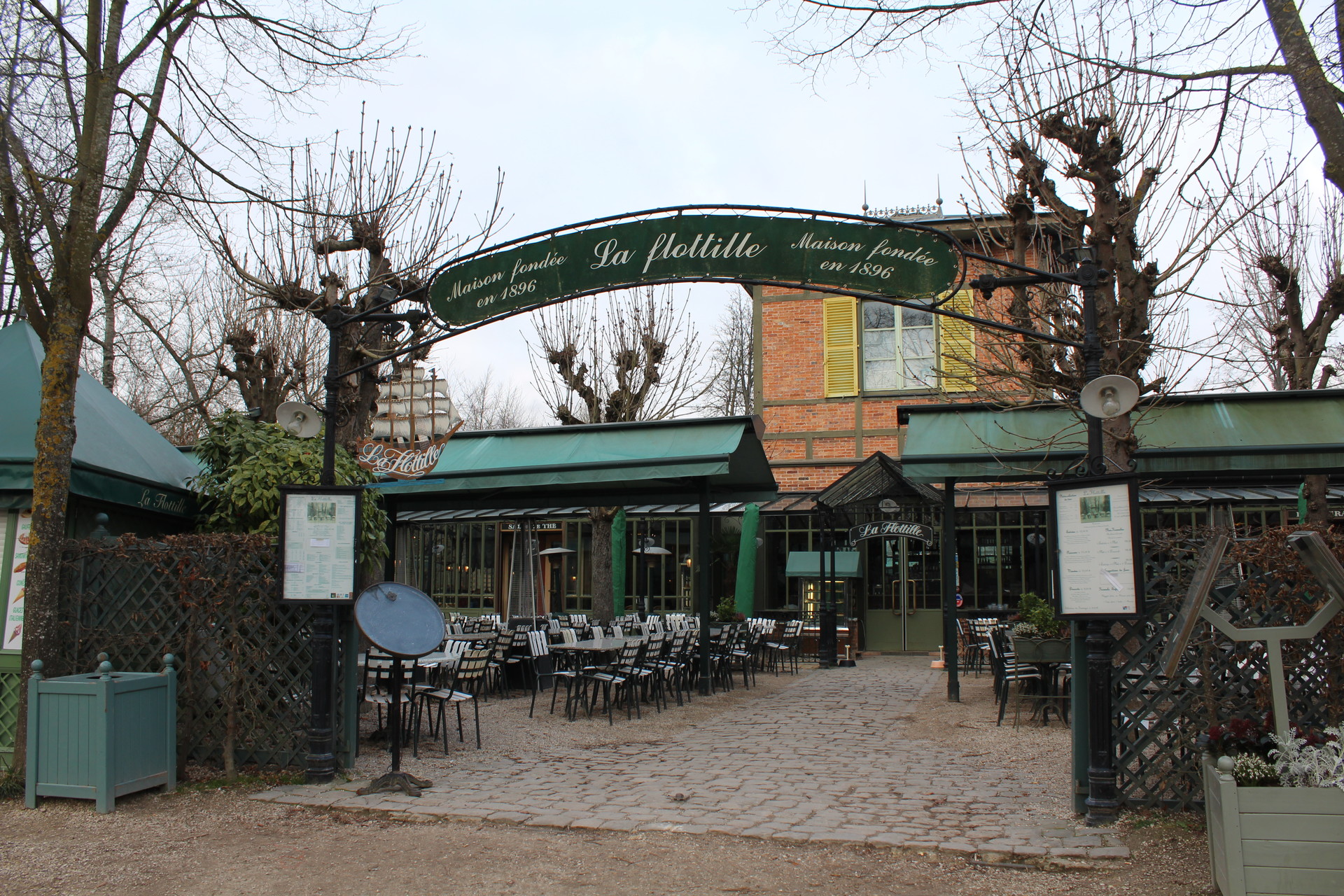
(I don't understand why it was so empty given that everyone had highly recommended it to me. )
A palace in winter
It's pretty commonplace that many tourists visit France during the summer, and before going to Versailles, I was searching online for photos, recommendations, etc. Many of the photos were taken in summer when the trees were blossoming and everything looks prettier. I never found photos taken in winter until I went, and I honestly consider it to be equally as beautiful as it is in summer, despite the fact that the trees are bare and there aren't many flowers. I gave myself the job of taking some photos that show what it's like to tour the palace and the rest of the grounds in winter: it's equally as beautiful!
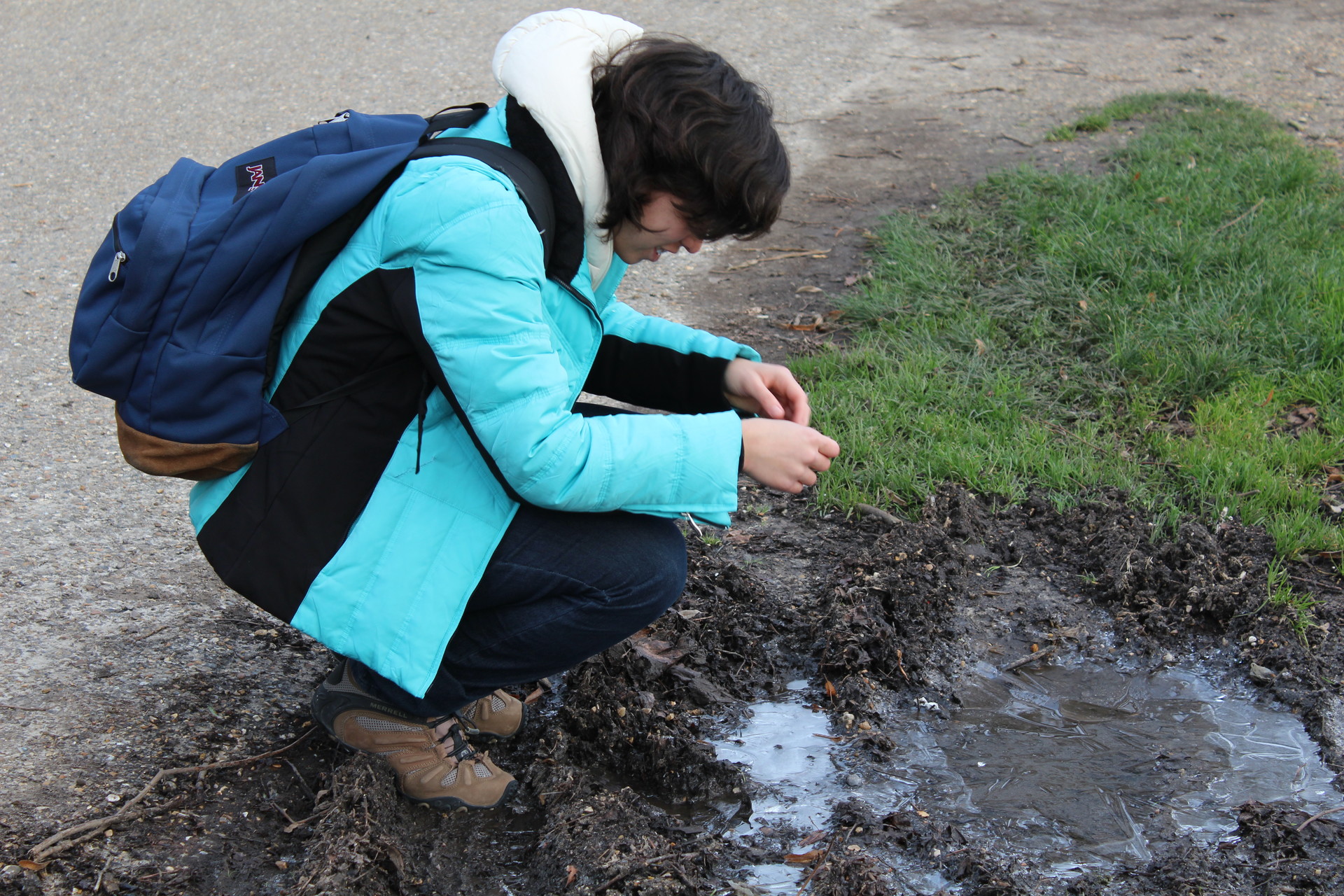
(There are occasions when even the mud is frozen. )
Souvenirs that are worth the money
I think tourists should save a bit of money to buy themselves at least a small souvenir at the gift shops located inside the palace. There are items that are really varied in price, size, use and shape, but if there's something that remains constant, it's their quality. You will be able to find these shops in rooms within the palace, which you will be pretty much forced to walk past them during the tour, so you won't miss a single one.
Without a doubt, my favourite store was the one that sold items related to Marie Antoinette because, although (like the French) I also hold some resentment towards her as a person, I have to admit that the items are very "girly" with the pastel pinks and whites. The notebooks and plastic bags with Marie Antoinette were the things that I liked the most - they would be the perfect gift for your girlfriend. I couldn't buy anything though because I didn't have any money left.
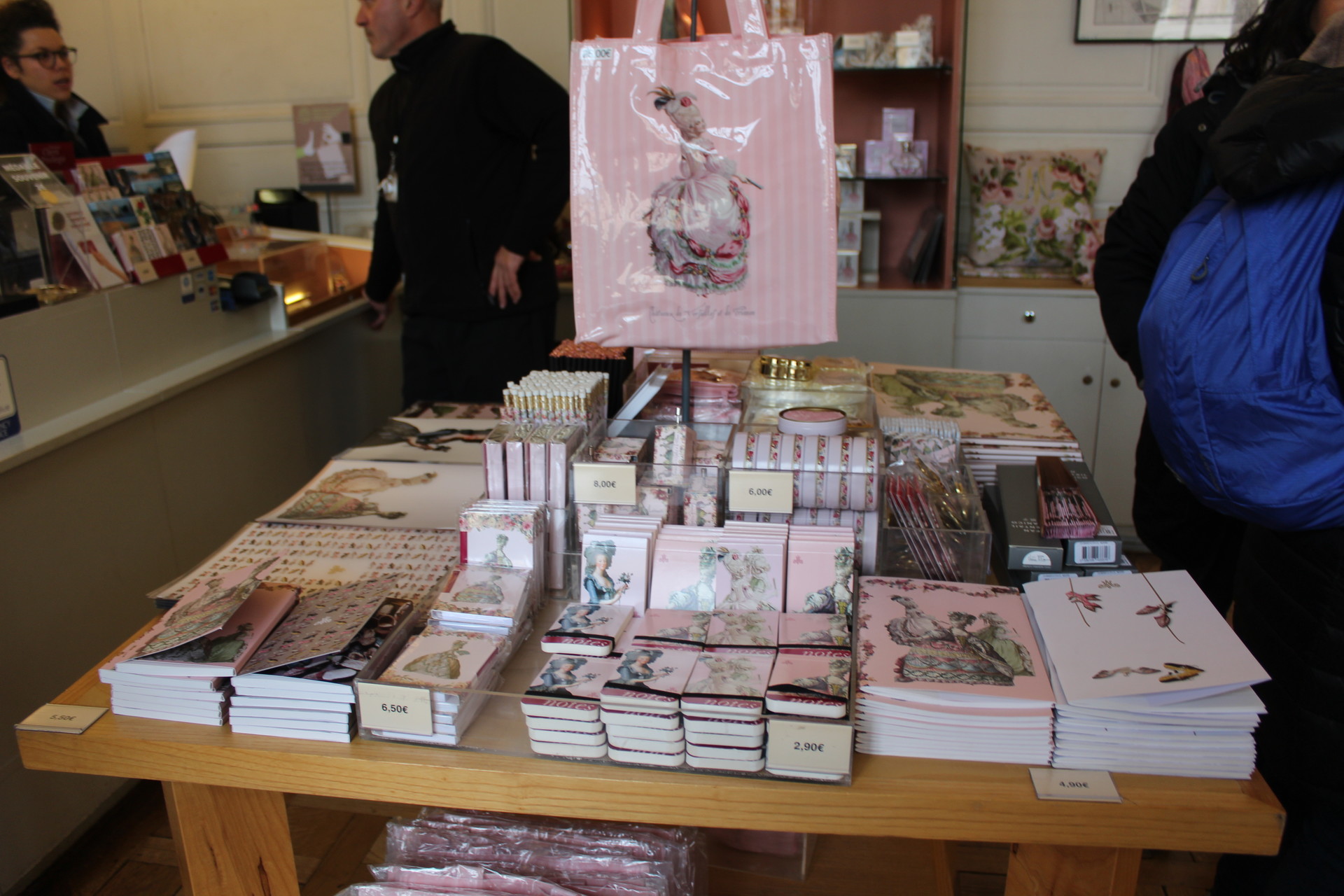
(Who could resist one of these souvenirs? I really regret not having been able to buy this bag, or at least one of these two notebooks on the right. )
Honestly, at least buy yourself a pen or a rubber: you won't regret spending a little bit of money on a gift or a souvenir from one of the most visited tourist attractions in the entire world.
The Queen's Hamlet (Marie Antoinette's domain)
Not very far from the Petit Trianon (but yes in the case of the Palace of Versailles), one of the least visited places of the entire complex (and for what reason, I am honestly not sure) can be found. The Queen's Hamlet is not the type of place where you will find luxuries, gold and ostentation, however I think that I enjoyed it more than the palace and I still haven't deciphered why exactly.
It's a known fact that you will have to follow the map quite a bit to get to this place, as it's located quite a way away, but one of the many good things about this is that you will see almost nobody here. When we came in January, we found the lake on the farm to be completely frozen. We thought that it wouldn't be as frozen as it looked, because we could still see fish swimming underneath the blocks of ice. However, we soon realised that these blocks were really thick when we threw several differently sized stones at them and not a single one managed to break them.
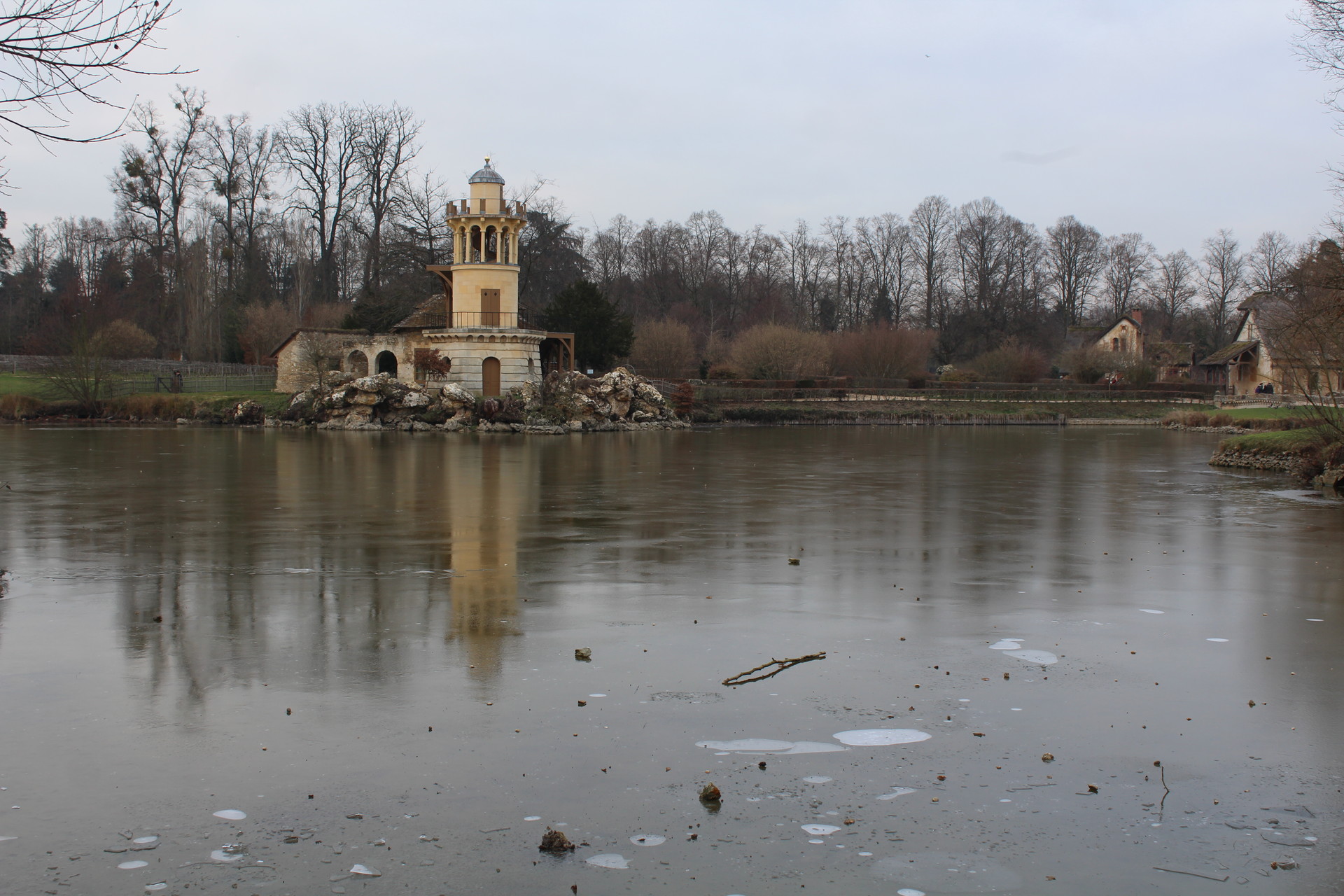
(The frozen lake with our attempts to break the ice shown in the lower part of the photo. We tried everything: wooden sticks, small rocks, and bigger stones. )
This place perfectly embodies the rural life that you could have lived in the French court. Marie Antoinette ran away from the court in 1783, but not without first commissioning her hamlet, where she could get even further away from the daily hustle and bustle that came with living in the court and enjoy a relaxed country life together with her housemaids. You could say, in terms of food, the palace was "self-sufficient", as the farm can be seen here, which supplied the kitchens with its vast agricultural produce. One of the things that I liked seeing the most was that they still had hens that were being constantly cared for by the staff and herded by a very friendly dog that you could stroke. You will find all kinds of animals that typically live on a farm, like rabbits, donkeys, hens and horses.

(The dog that I mentioned earlier during his "working hours". He can be found putting all of his disobedient chickens into place. )

(As I said before, the staff at the Palace of Versailles are always willing to help you, a smile included (of course), and I am not just referring to the human staff... the four-legged ones too! )
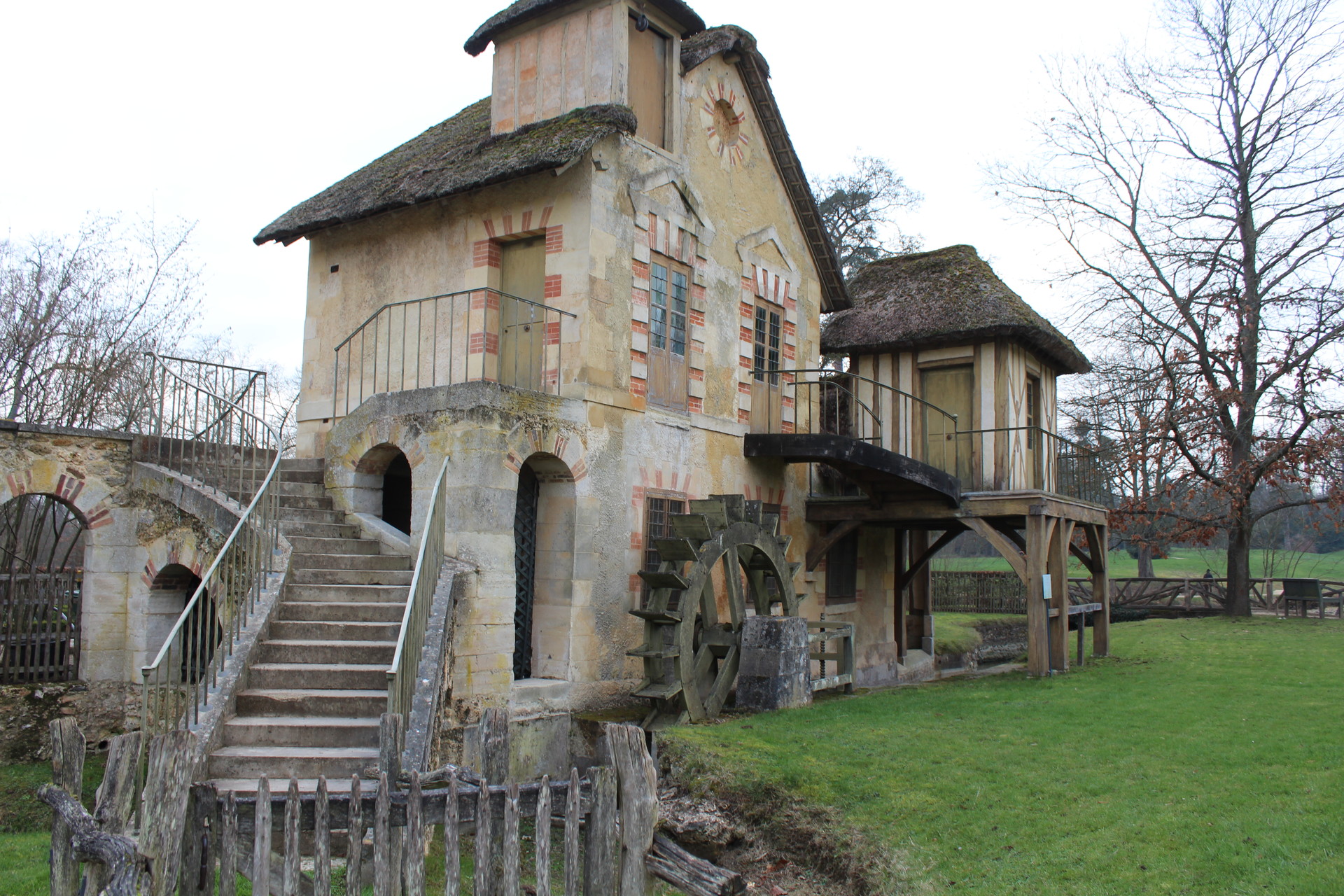
(One of the houses that you can't go inside, but you can get up very close to it. )
In the hamlet, there isn't just the farm, but also extensions of the palace built by order of Marie Antoinette. This hamlet was created more or less between 1783 and 1787, and it has a very different style to the one that you would see in the palace, as it has the appearance of a Norman village formed by eleven houses that surround the Great Lake. Unfortunately, you cannot go inside these houses, with many of them being under constant maintenance and remodelling works, but the photos that you can take here are beautiful.
Of the 11 houses built here, approximately five of them were used by the Queen to receive and house her guests whilst another four were for the use of the peasants, who were tasked with maintaining and preserving the hamlet. One of the houses had a very particular use, one that, in those times, is difficult to imagine: plate warming. It was in that house where all of the dishes were prepared for the Queen's dinners, but, of course, the dinners that were made in the Petit Trianon or the mill, that were being taken to rooms within the Palace of Versailles, probably would have arrived cold!
In this place, you won't just find domestic animals, but also different vegetable plantations for use at home, like cauliflowers, artichokes, or cabbages.
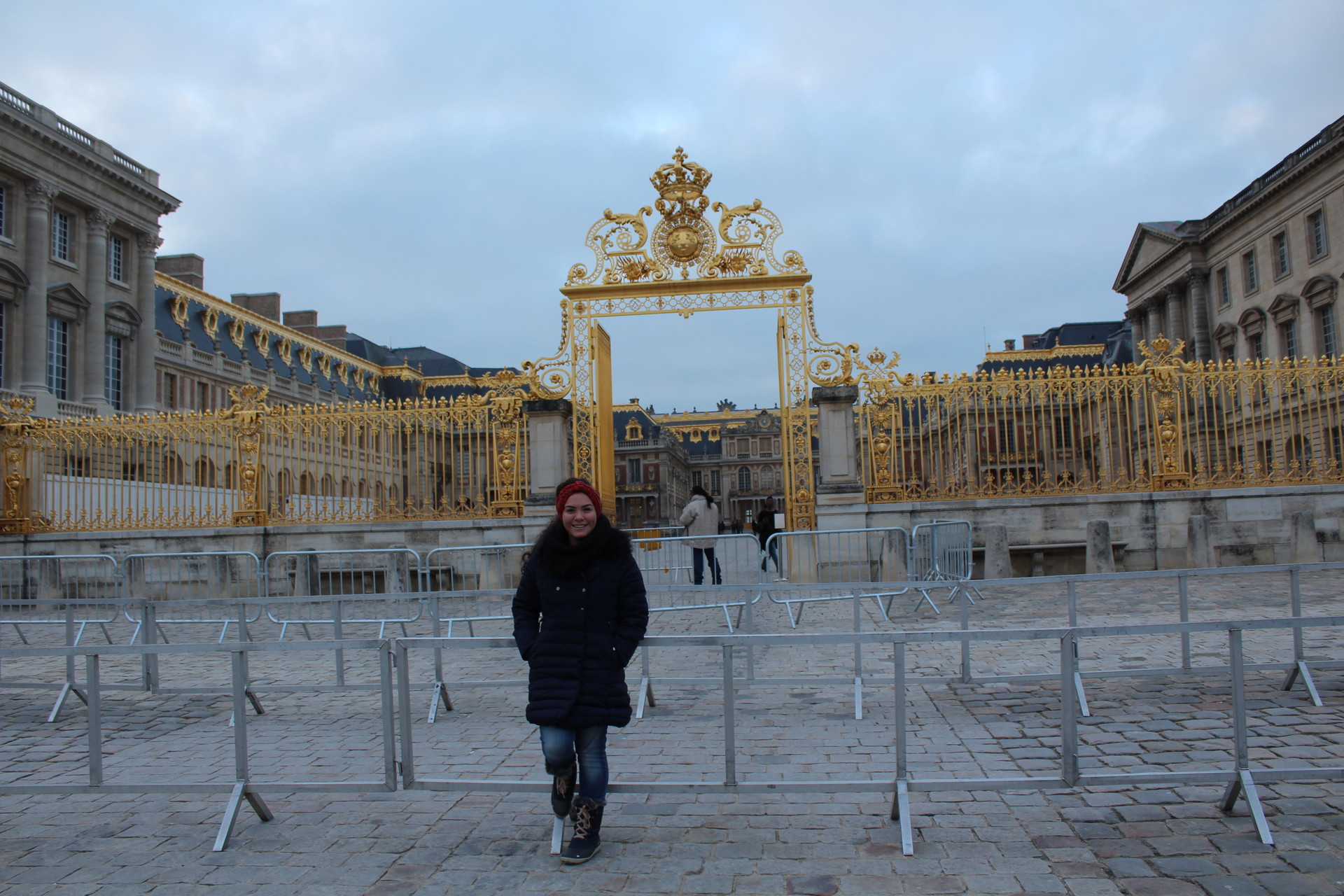
(Very happy leaving the palace. We were practically the last ones there and they were trying to kick us out. If you can't see the throngs of people, it's because it was closing time. I think this is the best time to take that particular photo, given that half the world won't stand in the way and ruin it. )
Final recommendations
- Wake up early to get to the palace early and avoid long queues.
- Buy your tickets in advance online.
- Make sure your valuables are well-protected and never let them out of your sight. There are honestly people who dedicate their lives to buying a ticket to visit the palace every single day with the sole intention of taking advantage of distracted tourists. It's something that even the staff will remind you about at any given opportunity.
- Wear extreme really comfortable clothing, as you will go on the longest walk of your life here. I recommend wearing some special walking shoes, but if you want to look vaguely fashionable in your photos of your travels to Versailles, make sure you just have them taken from the waist upwards, as you'll only care about your comfort on your bottom half.
- Bring lunch with you to eat before you enter and after the palace grounds if you don't want to buy food whilst you're there. Remember that it's prohibited to bring food into the complex, but you can put it in the lockers for free, which closehalf an hour beforethe palace.
- When you alight the train in Versailles, you will find lots of people who will want to sell you tickets. Just take care with the pricing so you know that they are giving you a fair price and are not taking advantage of you for being a tourist.
- Dedicate an entire day to your visit to the Palace of Versailles.
- Your day will not end after leaving the Palace of Versailles. The City of Versailles has its own charm, despite being small. Two blocks away from the palace's entrance, you will be able to find the tourism office where they will give you information about the places that are worth visiting in the city - you will find lots of buildings and churches. The place is calm and very picturesque; if you have some energy and time left, I recommend that you take a walk through the city's streets before returning to Paris or wherever it may be that you are staying during your time in France.
Photos of the City of Versailles
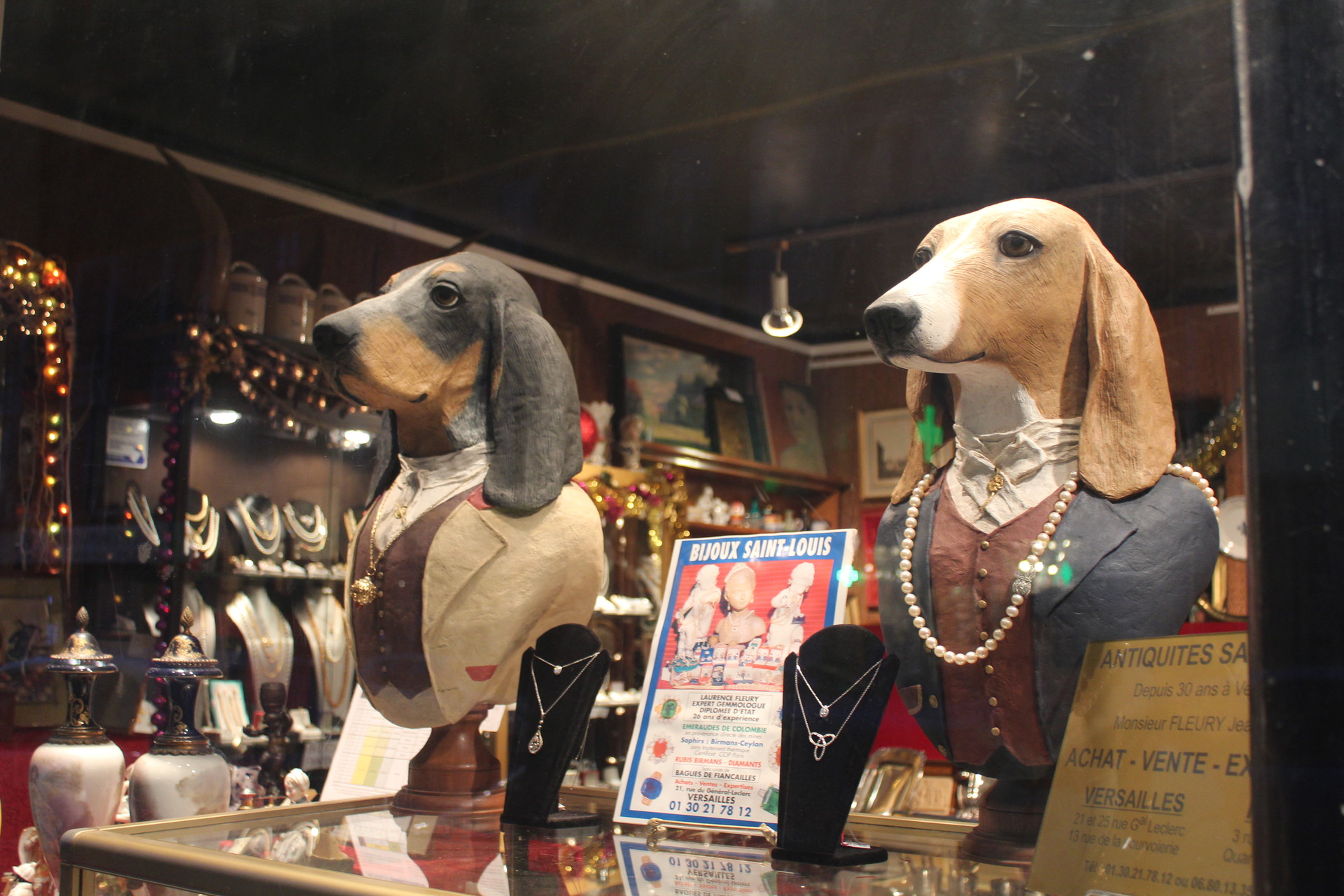
(When I tell you that you will be able to find little curiosity shops whilst walking through the quaint city of Versailles, I didn't mean it as a joke. This shop had several, high-quality pieces of jewellery, but with unique designs. )

(We decided to visit the Cathedral of Saint Louis, Versailles, because it was highly recommend in the guide that they gave us in the tourist information office. The city was almost completely void of people and even less so at the church, so visiting it at night and seeing it so empty scared me a little. )

(This was a hotel, but it was previously a very important historic place, although I cannot remember exactly what it was. Its design is unique and seems a bit ad hoc given the style of the Palace of Versailles, and the best thing about it is that is located just one street away. If you have money, don't even hesitate for a second about staying here.)
 What to see Versailles,
Versailles,
France
What to see Versailles,
Versailles,
France
